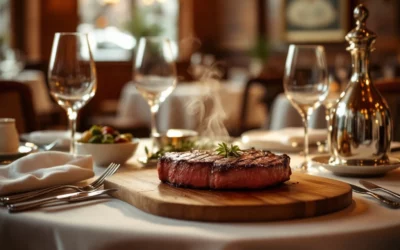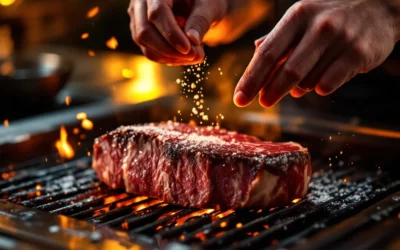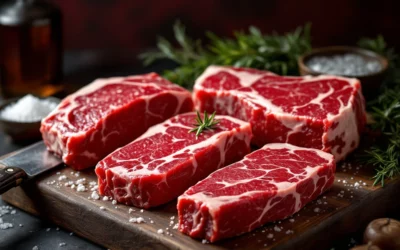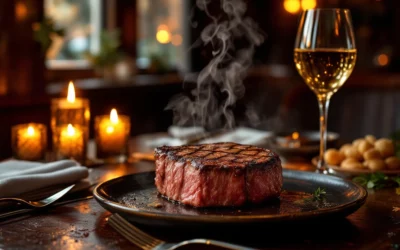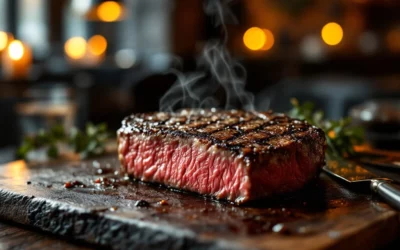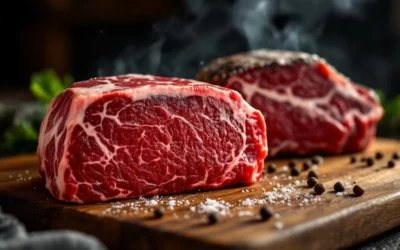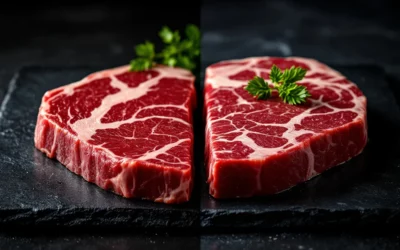Premium steakhouses in Amsterdam distinguish themselves through strict service standards that far exceed those of ordinary restaurants. From specialized meat knowledge where staff function as meat sommeliers to personalized recommendations based on taste preferences – these restaurants create a complete culinary experience. With consistent quality control from procurement to presentation and flexible reservation systems for different occasions, they ensure that every guest enjoys the craftsmanship and quality that make these high-end establishments so special.
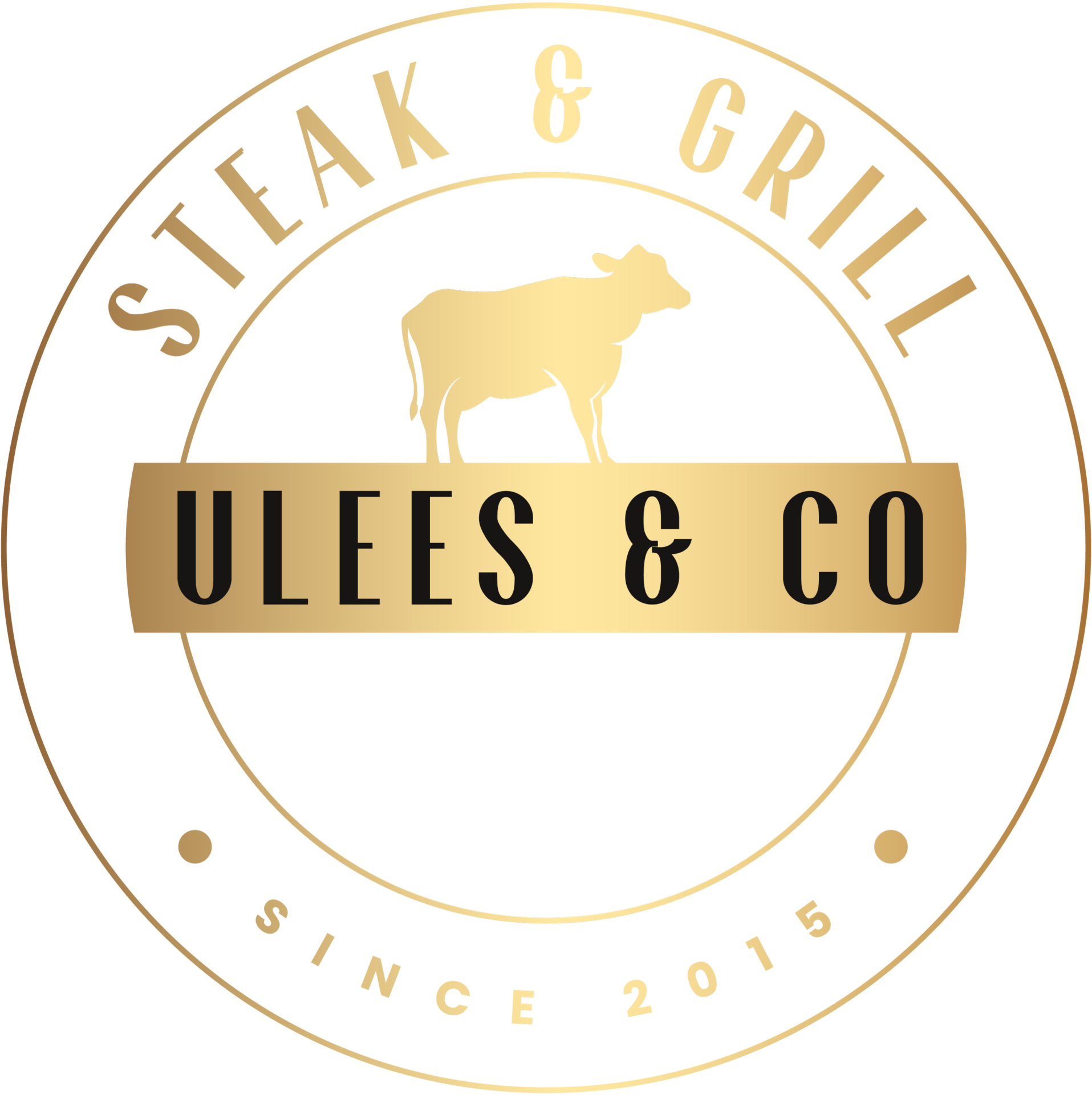
Steakhouse Experience Amsterdam
Laatste blogposts
What role does the chef play in a premium steakhouse in Amsterdam?
Discover how a chef in a premium steakhouse Amsterdam does more than just cook. This specialist combines in-depth meat knowledge, mastery of charcoal grilling, and expertise in quality selection into a complete culinary experience. From recognizing different cattle breeds to training service teams as meat sommeliers – the chef ensures top quality with every preparation and creates stories that engage guests with their meal.
Which premium cuts are the most versatile in the kitchen?
Ribeye, striploin and tenderloin are the most versatile premium cuts for home cooks. These cuts perform excellently when grilling, roasting, cooking sous-vide and even in raw preparations thanks to their perfect marbling and tender texture. Ribeye offers rich flavour through intensive marbling, striploin combines flavour with structure, and tenderloin delivers ultimate tenderness. Their flexibility makes them suitable for both beginner and experienced cooks who want to experiment with different techniques and occasions.
How do you serve premium beef like a professional chef?
Discover how to perfectly prepare premium beef such as Wagyu and Scottish Angus using professional techniques. From core temperature to reverse searing – learn the secrets of top chefs for restaurant-quality results at home. With the proper cutting direction, preparation methods and presentation, you will transform high-quality meat into an unforgettable culinary experience that will amaze your guests.
What are the best months for a steakhouse visit in Amsterdam?
Discover why September-November and March-May are the optimal months for a steakhouse visit in Amsterdam. These periods offer the best meat quality due to ideal conditions for dry-aging processes, less crowding than the summer months, and better availability for reservations. Furthermore, culinary events such as the World Steak Challenge in October occur during these times, making your steakhouse experience extra valuable with exclusive tastings and masterclasses.
How do you evaluate the service quality of a steakhouse in Amsterdam?
You can recognize an excellent steakhouse in Amsterdam by more than just good meat. The quality of service depends on the staff’s meat expertise, perfect timing of dishes, and an appropriate ambiance. Truly trained staff can answer specific questions about origin, aging processes, and preparation methods, while the atmosphere determines 40-50% of your total experience. You can recognize inconsistent service by varying attention levels and different information levels between staff members. The price-quality ratio is right when meat quality, service level, and ambiance all justify the premium price level.
How does the age of the cattle affect the premium quality?
The age of cattle directly determines the quality of premium beef. Between 18-30 months, cattle reach the perfect balance between tenderness and flavour intensity, where muscle fibres and fat distribution develop optimally. Japanese Wagyu peaks around 28-30 months, whilst Scottish Angus is already ideal at 20-24 months. Meat that is too young lacks complex flavour profiles, whilst meat that is too old becomes tough due to hardening of connective tissue. Premium steakhouses deliberately select specific age groups for different dishes. Discover how to recognise the perfect balance through colour, marbling and texture for the ultimate meat experience.
How do you distinguish Japanese Wagyu from Australian Wagyu?
Japanese Wagyu and Australian Wagyu differ fundamentally in origin, breeding tradition, and flavor profile. Japanese Wagyu comes from four specific cattle breeds with centuries-old breeding programs and the strict A5 grading system, while Australian Wagyu is created through crossbreeding with local breeds. The difference in terroir, feeding, and regulation creates unique characteristics in marbling, texture, and taste – from the butter-rich intensity of Japanese A5 to the full beef flavor of Australian Wagyu.

Arnhem
Vlees & Co Arnhem
Nieuwe Plein 22a
6811 KR Arnhem
026 70 24 010
arnhem@vleesenco.nl
Nijmegen
Vlees & Co Nijmegen
Kelfkensbos 32
6511 TB Nijmegen
024 20 68 973
nijmegen@vleesenco.nl
Amsterdam
Vlees & Co Amsterdam
Albert Molhof 1
1031 JK Amsterdam
020 786 89 22
amsterdam@vleesenco.nl
